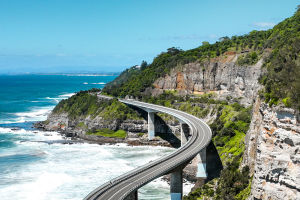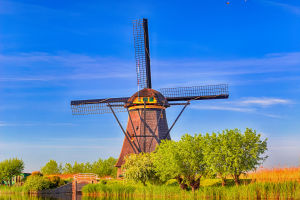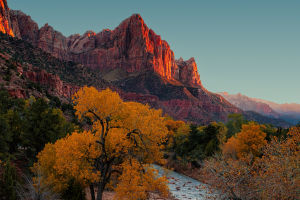As one of the most fascinating and world-famous natural wonders in Canada, the Canadian Rocky Mountains run along the Pacific coast of western North America, from the Canadian province of British Columbia to the southern state of New Mexico in the United States, and are the watershed of the North American continent.
As we looked along the Rocky Mountains, we saw icy blue lakes, pale blue glaciers, majestic and lofty mountains, flying waterfalls, mysterious and gorgeous aurora borealis, etc. The magnificence of the scenery along the way is beyond your imagination.
Apart from being overwhelmed by nature, all other words of praise can only be melted into a joyful admiration, just to be glad to see the Rocky Mountains in this life.
The Rocky Mountains were formed between 80 and 55 million years ago, and crustal movement and glacial erosion created the dramatically gorged peaks and canyons from which rivers flow into three oceans, linking Banff, Jasper, Kootenay, and Youghal National Parks.
As well as Mount Robson, Mount Assiniboine, and Humber Provincial Park make up a brilliant alpine landscape known as the Canadian Rockies Park Complex.
The Rocky Mountains are the backbone of the Cordillera Mountain System in North America, the longest folded mountain system on land in the world, which was formed as a result of the collision and compression between the Pacific Plate, the Antarctic Plate, and the American Plate.
The Cordillera is located on the western side of the American plate, facing the Pacific Ocean in the west, from Alaska in the northwestern part of North America to Tierra del Fuego in the southern part of South America, with a total length of more than 15,000 kilometers. The part of the Cordillera system in North America is called "The Rocky Mountains" and the part in South America is called "The Andes".
The violent collision of the Pacific Plate and the American Plate on the western side of North America caused strong uplift of the coastal areas of North America, resulting in the formation of a series of folded mountains with a northwest-southeast orientation.
The main part of the Rocky Mountains stretches from British Columbia, Canada, to New Mexico in the southwestern United States, with a total length of 4,800 kilometers, including a number of small mountain ranges together, of which 39 have names, and so large that their width can reach hundreds of kilometers wide in some areas.
The average elevation of the Rocky Mountains is around 2,000 to 3,000 meters, which is much higher than the Appalachian Mountains in eastern North America.
Many peaks in the Rockies exceed 4,000 meters in elevation, with the main peak, Elbert Peak, at 4,399 meters. The Rockies, like many of the world's tallest and most treacherous mountains, such as the Himalayas, the Alps, and the Andes, are young mountains.
For millions of years, the Rocky Mountains and glaciers have worked together to create the climate, forests, rivers, and other landscapes of North America, forming more than 150 lakes such as Lake Louise and Lake Monroe, 720 kilometers of streams, and wetlands and forests.
Glacial meltwater nourishes wetlands, forests, lakes, and streams, with dense pines and firs standing proudly in the snow and streams gurgling in between. The lake is as quiet as a mirror, and the mountains and trees behind it are so magnificent and beautiful. The sunshine and the blue waves are a perfect picture of the landscape.
In Jasper National Park, take a boat to the center of the lake to the legendary Elf Island, as the legend of the island, is a girl in the form of a genie, waiting for a lover to fall in love.


